Metal powder for 3d printer
3D Printing Metal Filaments and Powders
There are two main drivers of whether or not a metal alloy is printed today: printability and demand. Though there are a wide variety of metal 3D printing processes out there, nearly all rely on metal powders. These materials take two forms in printing: raw 3D printing metal powders, or bound powder 3d printing metal filament. As a result, the metal materials printable today are to a large degree constrained by powder availability and whether or not that powder can be effectively bound. Aluminum, as an example, is notoriously difficult to print well and is as a result relatively uncommon.
Metal 3D printing is useful for parts that are tricky to machine, either in complexity or material, because especially at low volumes it can be cheaper. Harder materials like stainless steels, tool steels, titanium, and others are more difficult to work with and require higher quality tooling, better machines, and more overhead costs. The added natural manufacturing costs adds to the relative value that 3D printing provides, allowing them to cross the "inflection point" at which 3DP becomes valuable. On the other side of the spectrum, materials that are easy and cheap to machine (low grade steel, aluminum), aren't as in demand because it's already easy to make them. This forms a grouping of "common" metal printing materials that are traditionally really hard to work with, made simple by additive instead of subtractive.
What are the most common metals for 3D Printing?
- Stainless Steels (17-4 PH, 316L, 304)
- Tool Steels (h23, A2, D2)
- Specialty Alloys (Inconel, Cobalt Chromium, and others)
- Titanium (Ti64)
- Aluminum (4047, 6061, 7075)
Steel 3D Printing
Steel is the most common metal 3D printing material. Its strength, ability to be turned into 3D printing metal powder, relatively low cost, and post-processability make it a material usable in many applications. Most varieties of steel can be printed: the two most common are stainless steels and tool steels. Not all steels are commonly printed -- Alloy steels, which are the most common to fabricate conventionally, are rarely printed.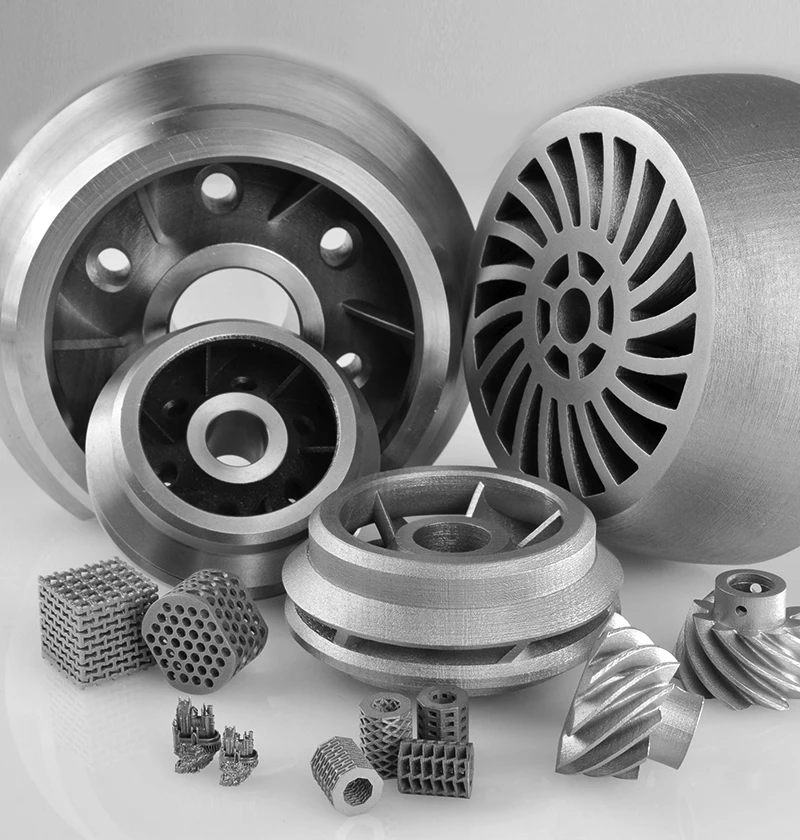 Due to their lower conventional fabrication costs and inferior material properties, they’re not as valuable of a material to print.
Due to their lower conventional fabrication costs and inferior material properties, they’re not as valuable of a material to print.
Stainless Steels
Stainless steels are strong, stiff steels that possess excellent corrosion resistance due to their significant Chromium content (at least 12%, often up to 18%). They come in two different varieties, austenitic and martensitic.
A stainless steel lattice, printed with a Selective Laser Melting printer. Image from Axom.Austenitic stainless steels are the most common type of stainless steel. They’re corrosion resistant and can be both machined and welded, though they cannot be heat treated. 303 and 304 are the most common types of austenitic stainless steels, and 316L is a variant that maximizes corrosion resistance.
Martensitic stainless steels are much harder than austenitic steels, but more brittle and less corrosion resistant. As a group, they lack the general versatility of austenitic steels -- however, they can be heat treated and precipitation hardened.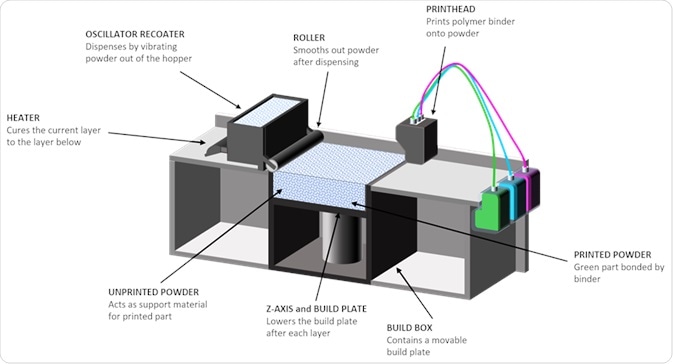 They’re best when you need a hard and stiff stainless steel. 17-4 PH is a particularly useful type of martensitic stainless steel that can be heat treated to fit a variety of material properties -- it’s also the most common martensitic steel, though others (like 420) are also printed.
They’re best when you need a hard and stiff stainless steel. 17-4 PH is a particularly useful type of martensitic stainless steel that can be heat treated to fit a variety of material properties -- it’s also the most common martensitic steel, though others (like 420) are also printed.
Tool Steels
Tool Steels are named for their central application -- tooling of all varieties. They contain carbide, an extremely hard compound that’s critical to their ability to cut, grind, stamp, mold, or form. Generally, they’re very hard, abrasion resistant, and usable at high temperatures. Tool steels are categorized by the AISI-SAE grading systems, divided into types by function. The three types most commonly metal 3D printed are A series, D series, and H series tool steels.
Tools steels are often uses for stamping, pressing, and other metal forming applications. Image from ultrastamping.A Series tool steels are great general-use tool steels -- they balance wear resistance and toughness and are machinable. There are eight varieties of A Series tool steels, the most common of which is A2. It’s a versatile tool steel often used to make punches and dies, but usable in a wide variety of applications.
There are eight varieties of A Series tool steels, the most common of which is A2. It’s a versatile tool steel often used to make punches and dies, but usable in a wide variety of applications.
D Series tool steels are optimized for wear resistance and hardness. They’re not particularly tough, and only used for cold work applications. The most common variety of D Series tool steel is D2 -- it’s used for all kinds of cutting tools, from blades to industrial cutting tools and even knives.
H Series tool steels cut and shape material at high (or cycling) temperatures. They’re not as wear resistant as A or D Series tool steels at low temperatures, but hold their strength and stiffness well in increased heat. Though there are many types of H-Series tool steel, h23 the most common 3D printed variety. Its mix of excellent toughness, wear resistance, and heat resistance make it a good general use tool steel that’s optimized for use in high temperatures (hot working).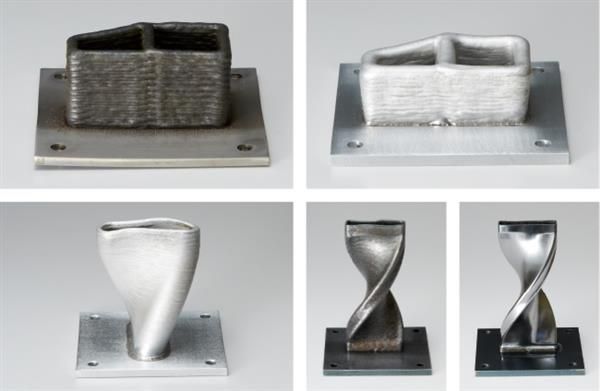
Titanium 3D Printing
While Titanium is by no means a common material to fabricate conventionally, its unique properties and high base cost make it a great candidate for 3D printing. It’s strong, incredibly lightweight, heat and chemical resistant, and can be biocompatible. Though there are a few different types of Titanium that can be printed, one is by far the most common: Titanium 64 (Ti-6Al-4V).
A custom titanium bike part 3D printed with an SLM machine. Image from Spencer WrightTi64 is the most common type of Titanium in both 3D printing and conventional fabrication. It possesses an excellent strength to weight ratio and can be heat treated to further improve strength. The material also excels in adverse environments due to its corrosion and heat resistance. As a result, it’s used heavily in aircraft (missiles, rockets, airplanes) medicine (as orthopedic implants) and other places where high strength to weight ratio is beneficial.
Aluminum 3D Printing
Aluminum is notoriously difficult to print. As a result, it’s a relatively uncommon printing material despite being exceedingly common in conventional fabrication. The varieties that are printed are generally casting grade aluminum, not more common machinable types like 6061 or 7075. These casting grade aluminum alloys all contain significant (up to 12%) Silicon content, and are weaker and less stiff than 6061. It’s not immediately clear when Aluminum will become more readily available as a 3D printing material, but until then materials like steel and titanium achieve similar strength to weight ratios when printed with open cell infill.
As a result, it’s a relatively uncommon printing material despite being exceedingly common in conventional fabrication. The varieties that are printed are generally casting grade aluminum, not more common machinable types like 6061 or 7075. These casting grade aluminum alloys all contain significant (up to 12%) Silicon content, and are weaker and less stiff than 6061. It’s not immediately clear when Aluminum will become more readily available as a 3D printing material, but until then materials like steel and titanium achieve similar strength to weight ratios when printed with open cell infill.
Specialty Alloys
In addition to more common metals, 3D printers can also fabricate parts out of alloys uniquely suited for hostile environments. These “superalloys” -- metals that exhibit high strength, heat resistance, good surface stability, and resistance to corrosion or oxidation -- can be used in a wide variety of high performance applications. Two subgroups are most common: Inconel and Cobalt Chrome.
Inconel
Inconel is the most common and best known proprietary nickel alloy. It’s an extremely strong, stiff, and corrosion resistant material used in places like turbines, engine seals, and rockets. There are two main formulations that are 3D printed: Inconel 718 is stronger and tougher, and Inconel 625 is more heat resistant. Both materials are incredibly expensive to machine conventionally, making 3D printing a cost-effective alternative to fabricating high fidelity parts.
Cobalt Chrome
Cobalt Chromium is a superalloy known for its biocompatibility, high strength to weight ratio, and corrosion resistance -- it’s essentially a higher-grade, more expensive version of Titanium. Like Inconel, it’s used in turbines and other hostile environments. Unlike Inconel, it can be used in medical applications as orthopedic or dental implants.
Looking Forward
The long term success of metal printers hinges to a large degree on their ability to support a wide variety of materials reliably. The current list is short and focused on higher grade materials that are financially beneficial to fabricate now. However, as metal 3D printing matures, expect to see more and cheaper metal 3D printing filaments and powders available across different metal printing platforms. These materials in turn will open up new applications for metal printing, furthering its adoption by the manufacturing masses.
The current list is short and focused on higher grade materials that are financially beneficial to fabricate now. However, as metal 3D printing matures, expect to see more and cheaper metal 3D printing filaments and powders available across different metal printing platforms. These materials in turn will open up new applications for metal printing, furthering its adoption by the manufacturing masses.
Nickel alloys for industrial 3D printing
Nickel alloys material characteristics make it ideal for a wide range of applications, for example in gas turbines for both aerospace and energy industries, process industry, oil and gas, ship building.
The nickel alloy family of powders encompasses the IN625, IN718, IN939, HX and HAYNES® 282® alloys. All these powders are designed and tested for use on EOS’ metal systems.
All EOS nickel alloy powders are shipped with an inspection certificate (according to EN 10204, Type 3.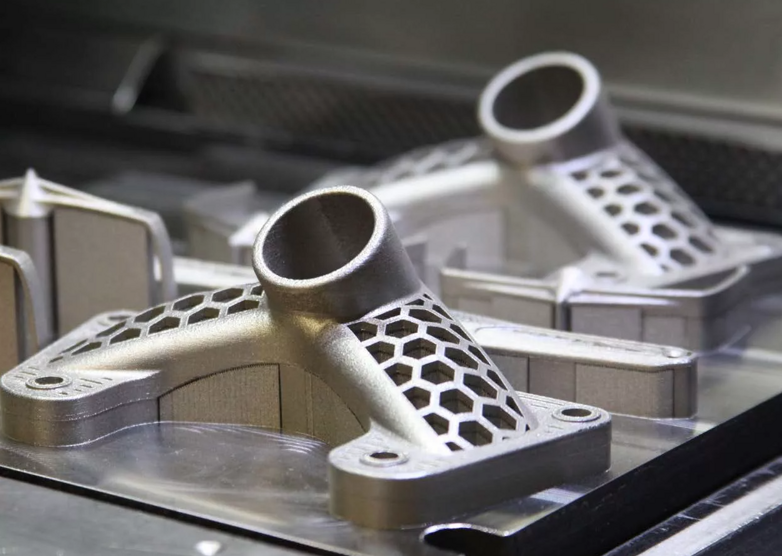 1) showing the results of the extensive QA testing not only of the powder itself, but also of test parts built on a dedicated system with a dedicated process.
1) showing the results of the extensive QA testing not only of the powder itself, but also of test parts built on a dedicated system with a dedicated process.
EOS also offers a wide range of validated processes for each of the above materials. These offer the optimal combination of parameters (e.g. laser power, layer thickness, etc.) in order to ensure that the properties of the 3D printed part are consistently achieved.
Parts are characterized by having high tensile, creep and rupture strength and are heat and corrosion resistant. This combination is ideal for for racing applications, gas turbines in aerospace and energy as well as ship building industries.
Typical Part Properties
| Chemical composition in compliance with | UNS N06625, AMS 5666, AMS 5599, 2.4856, NiCr22Mo9Nb |
| Ultimate Tensile Strength | 920 MPa |
| Yield Strength | 670 MPa |
| Elongation @ Break | 40 % |
EOS NickelAlloy IN625 | EOS M 290
83,6 KB
Download
EOS NickelAlloy IN625 | EOS M 300-4
252,3 KB
Download
Source: MaterialsSolutions | EOS
Combuster from MaterialsSolutions built in EOS NickelAlloy IN718
Parts show good tensile, fatigue, creep and rupture strength at temperatures up to 700°C making it ideal for many high temperature applications such as gas turbine parts, instrumentation parts, power and process industry parts, etc.
Typical Part Properties
| Chemical composition in compliance with | UNS N07718, AMS 5662, AMS 5664, 2.4668, NiCr19Fe19NbMo3 |
| Ultimate Tensile Strength | 1020 MPa |
| Yield Strength | 710 MPa |
| Elongation @ Break | 29 % |
EOS NickelAlloy IN718 | EOS M 400
113,9 KB
Download
EOS NickelAlloy IN718 | EOS M 290, EOS M 300-4 and EOS M 400-4
547,3 KB
Download
Source: Euro-K | EOS
Euro-K Burner
Parts show high tensile, fatigue, creep and rupture strength at temperatures up to 850°C (1560°F) as well as excellent corrosion and oxidation resistance.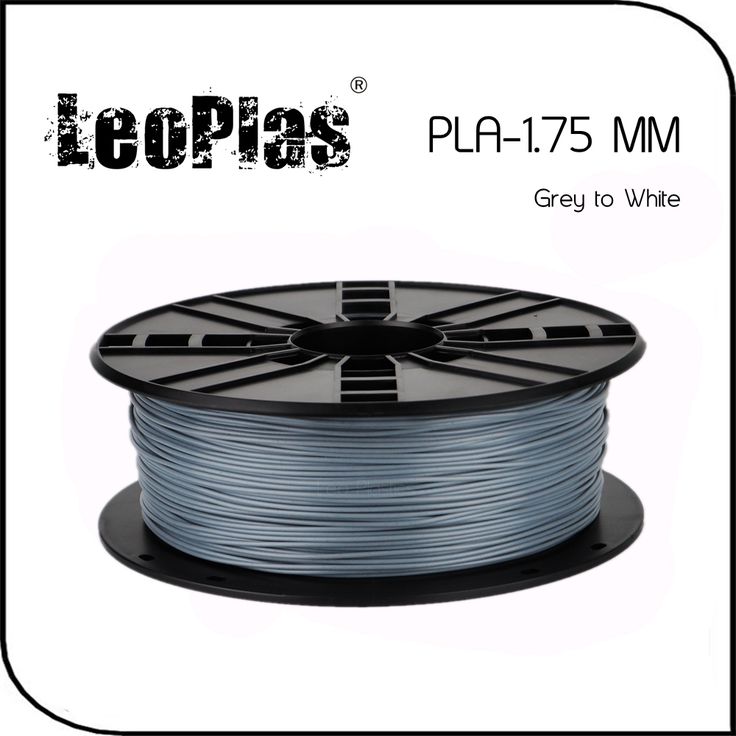 Parts are crack-free in as manufactured and heat-treated condition and are resistant to strain-age cracking. A short AM-optimized heat treatment is needed but not HIP.
Parts are crack-free in as manufactured and heat-treated condition and are resistant to strain-age cracking. A short AM-optimized heat treatment is needed but not HIP.
Typical Part Properties
| Ultimate Tensile Strength | 1510 MPa |
| Yield Strength | 1115 MPa |
| Elongation @ Break | 12 % |
EOS NickelAlloy IN939 | EOS M 290 and EOS M 400-4
1,3 MB
Download
Parts show high strength and oxidation resistance also at elevated temperatures of up to 1200°C, making it ideal for applications in aerospace, gas turbines, etc.
Typical Part Properties
| Chemical composition in compliance with | UNS N06002, AMS 5390 |
| Ultimate Tensile Strength | 750 MPa |
| Yield Strength | 590 MPa |
| Elongation @ Break | 33 % |
EOS NickelAlloy HX EOS M 290
113,5 KB
Download
EOS NickelAlloy HX EOS M 400-4
91,5 KB
Download
Source: TUM | EOS
TUM Solid Fuel Burner built in EOS NickelAlloy HX
This material is a precipitation strengthened nickel-base superalloy with a unique combination of high temperature strength, thermal stability, and fabricability.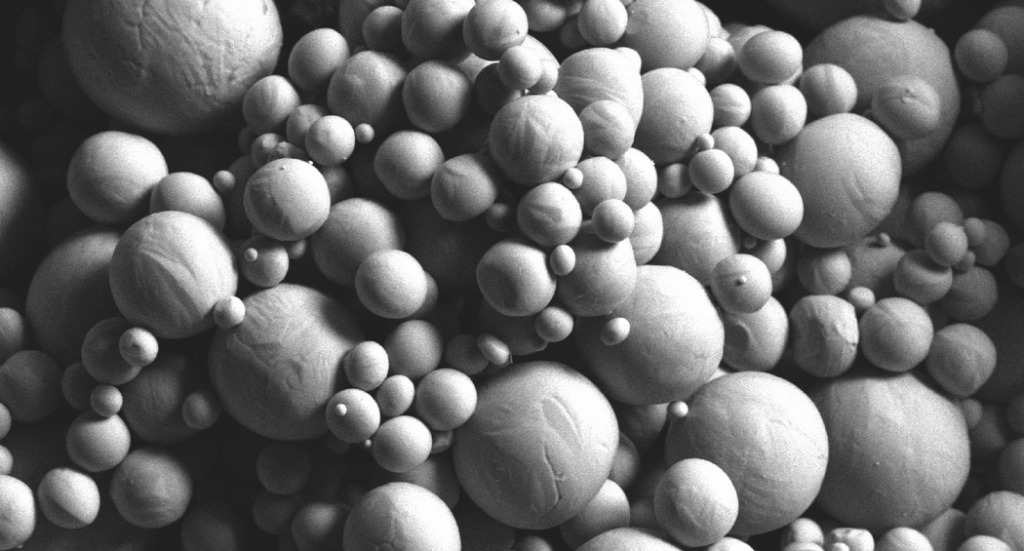 The alloy was developed for high temperature structural applications.
The alloy was developed for high temperature structural applications.
Typical Part Properties
| Ultimate Tensile Strength | 1180 MPa |
| Yield Strength | 710 MPa |
| Elongation @ Break | 26 % |
EOS NickelAlloy HAYNES® 282® | EOS M 290 and EOS M 400-4
683,5 KB
Download
Source: EOS
Aerospike Nozzle built in EOS NickelAlloy Haynes® 282®
Metal powder for 3d printer: titanium powder production
Metal printing is one of the most promising industries of the future. It allows you to avoid a lot of disadvantages inherent in classical casting or stamping. For the manufacture of the part, a special powder is used, from which the workpiece is obtained. It is he who gives the final product one or another physical property.
It allows you to avoid a lot of disadvantages inherent in classical casting or stamping. For the manufacture of the part, a special powder is used, from which the workpiece is obtained. It is he who gives the final product one or another physical property.
Main characteristics of metal 3D printing
Metal 3D printers are used in large-scale production. They find their application in design offices, engineering shops and research institutes. In civilian areas, metal printers are installed in medical centers.
Additive printing technology allows you to make complex interlaced designs in a single piece. For example, in 2020 NASA made a "space fabric". The material resembles chain mail in texture with a very complex internal pattern. The difference between ancient armor and modern material lies in the production technology. Chain mail was woven, linking each link by hand. The space fabric was printed in one pass.
Space cloth
3D printed metal products are valued for their characteristics:
- High strength finished part.
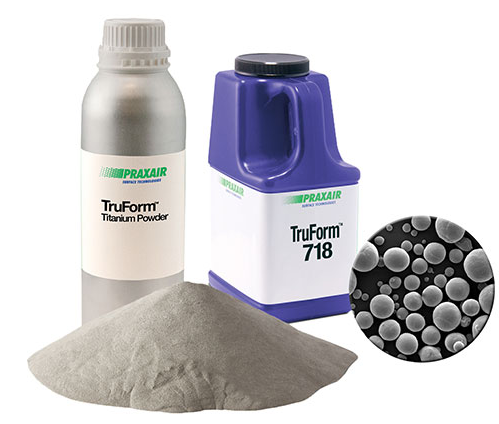 Density indicators are 1.5 times higher than in metal casting.
Density indicators are 1.5 times higher than in metal casting. - Complex geometry. You can print intricate shapes of bizarre geometry. For example, to make a high-strength chain without welding points.
- Wide range of alloys and materials. From aluminum to titanium.
- Rough product surface. In some cases, this is a plus, not a minus.
- No tension in the metal, which is almost impossible to achieve with casting.
- Wide range of post-processing.
A separate line is the cost of the finished part. Powder printing does not require special equipment, as, for example, for casting. The desired part is loaded into the program memory, and after a short time it appears from the printer.
Printing Part
Printing Technology
There are several basic printing technologies:
- SLM is the basic metal powder printing technology. The part is formed by sintering the material in the inner chamber of the printing device under the influence of a laser.
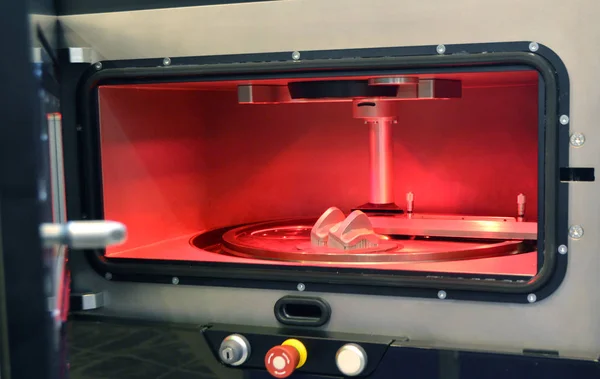
- DMP is almost a complete analogue of the previous technology. Such a solution can be found in 3D Systems printers.
- EBM is a technology in which the powder is sintered under the action of an electron beam gun.
There is a private variant of SLM called DMLS. The second option implies that the powder particles are heated to lower temperatures. The material does not become liquid.
Help! The SLM printing technology was developed by Wilhelm Meiners, Konrad Wissenbach, as well as Dieter Schwarz and Matthias Fokele. Subsequently, the founder Dieter Schwarz left for SLM Solutions GmbH, which is one of the world leaders in the production of 3D metal printers.
SLM Solutions 3D printer operator
Types of metal powders for 3D printing
There are about 20 most famous metal powder materials that are used for various tasks. For example, a technologist can take a titanium alloy to create the frame of a future assembly, and make the walls and insides of the mechanism from aluminum. Get a strong and lightweight design with the desired performance characteristics.
Get a strong and lightweight design with the desired performance characteristics.
Metal powders are actively used in the aviation, automotive, and aerospace industries. With the help of additive technologies, engineers create complex assemblies and innovative parts. The main types of powders: titanium, steel, aluminum, cobalt-chromium, nickel.
Important! When we say "powder", we mean an alloy based on one of the listed metals.
Titanium powder for 3D printer
The most common alloy is Ti6Al4V. It has excellent performance characteristics. Titanium alloy is rightfully considered one of the strongest and most durable among other metals. The finished product has a density of 4500 kg/m. Tensile strength ratings up to 900 MPa. The maximum temperature is up to +1100 °C. The material is valued for its lightness and reliability. It is often used in the aircraft and space industries.
Steel
Tool steel is used everywhere. The most common alloys: 1.2343, 1.2344, 1.2367, 1.2709. With the help of this material, molds for casting, various tools are made: cutters, measuring dies and tooling. Typically, steel alloys contain from 0.7% carbon. This makes the material more viscous. End products receive increased strength and hardness.
The most common alloys: 1.2343, 1.2344, 1.2367, 1.2709. With the help of this material, molds for casting, various tools are made: cutters, measuring dies and tooling. Typically, steel alloys contain from 0.7% carbon. This makes the material more viscous. End products receive increased strength and hardness.
Aluminum and alloys
This material is considered one of the cheapest lithium alloys on the market. The most common powders are AlSi10Mg, AlSi12. This material has several advantages: high resistance to corrosion, thermal conductivity, fluidity. The alloy is a good conductor of electricity. It is used in the manufacture of overall thin-walled parts.
Cobalt Chromium
CoCr alloy is one of the most common materials used in aircraft and missile applications. The alloy has high mechanical properties. Various components and parts with complex geometry are made from it. Cobalt-chromium alloys are used in the manufacture of clasp prostheses.
Nickel alloys
The main feature of nickel is the ability to dissolve other metals without losing strength.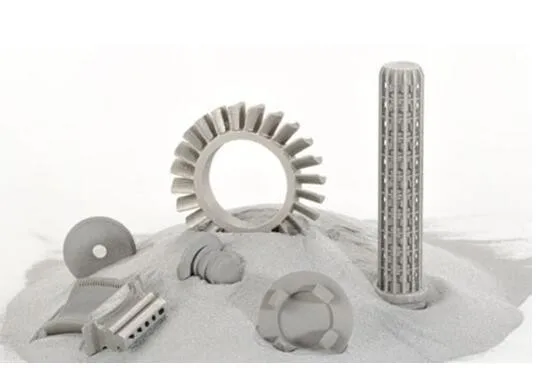 It is this characteristic that makes it one of the most common in various industries. For example, heat-resistant blades for jet engines are made from NiCr alloy. Some nickel alloys are comparable in melting point to titanium powder. Their upper threshold reaches +1100 °C. The most common nickel alloys are Inconel 625, Inconel 718, Inconel 939, Invar 36, NX.
It is this characteristic that makes it one of the most common in various industries. For example, heat-resistant blades for jet engines are made from NiCr alloy. Some nickel alloys are comparable in melting point to titanium powder. Their upper threshold reaches +1100 °C. The most common nickel alloys are Inconel 625, Inconel 718, Inconel 939, Invar 36, NX.
Other alloys and metals
Among other common metals, two more groups can be distinguished:
- Stainless steel alloys. Powders with a chromium content of at least 12%. These include 15-5PH, 17-4PH, AISI 410, AISI 304L, AISI 316L, AISI 904L.
- Non-ferrous alloys. Metal powder with the addition of copper or tin. Such materials include CuSn6, CuSn10.
There are also less demanded alloys, for example, based on tungsten.
Interesting! There are precious metal powders. In particular, Cooksongold created platinum powder for jewelry printing. Finished products receive a 950 test and boast the best mechanical characteristics.
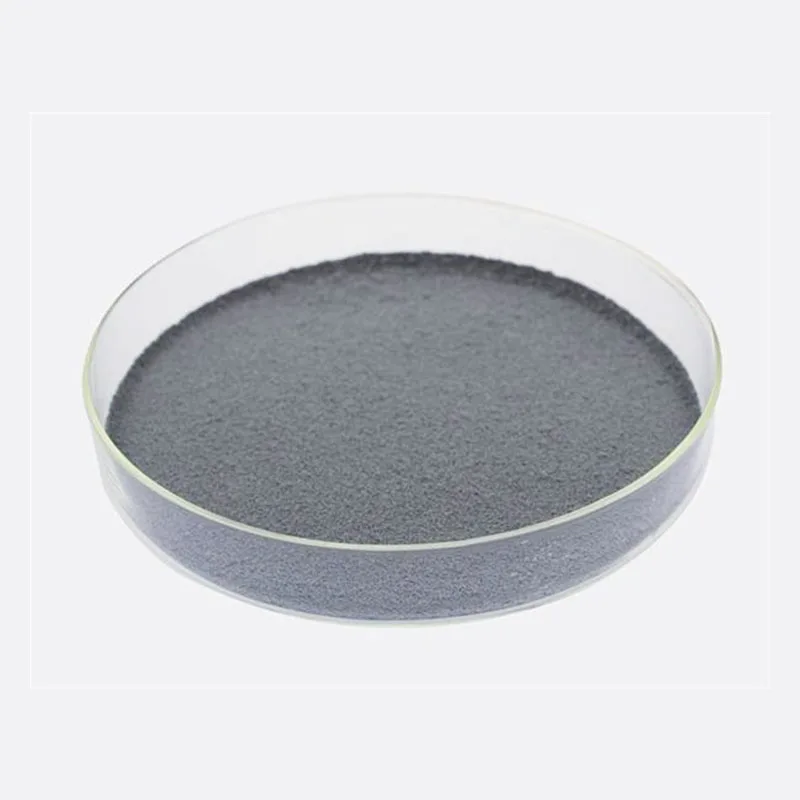
Platinum jewelry
Production of powder for a 3D printer
The cost of manufacturing a material for "refueling" a 3D printer for metal is higher than, for example, a filament or a photopolymer. This explains the price of the finished product. At the factory, the hot melt of metal is "sprayed" with a jet of gas, water or plasma to obtain a powder. This greatly complicates and increases the cost of production.
Interesting! In 2019, a group of Russian scientists from NUST MISiS developed a new method for making titanium and aluminum powder. In its production, a planetary mill is used. They get, as it were, a semi-finished product that reaches the desired mechanical properties already in the printing process.
SLM machine operators use the powder several times. In particular, they recycle marriage, and also re-produce support. And this is about 10% of the total mass of the printed blank. The remains are crushed and processed on special installations - atomizers.
The remains are crushed and processed on special installations - atomizers.
Atomizer
There are a large number of powders based on metal alloys. All of them solve certain problems. It is necessary to select the material based on the physical, mechanical and chemical properties of the final product.
- March 22, 2021
- 3515
Get expert advice
Metal powder production equipment for 3D printers by vacuum induction melting and gas atomization
Our dynamic time dictates its rigid rhythm. If earlier the time from development to implementation could take many years, now the world's leading manufacturers have reduced this time to months and even weeks. In the competition, the winner is the one who quickly manufactures components and produces a commercial sample. Metal 3D printers play an increasing role in the process of rapid modeling and prototyping. We offer you the supply of equipment for the production of various fine metal powders for 3D printing. This mini-factory is perfect for a modern research institute or for organizing your own production of metal powders for a large 3D printing center. This high-quality equipment will allow you to experiment with finely dispersed powders of your own production with a variety of component composition.
This mini-factory is perfect for a modern research institute or for organizing your own production of metal powders for a large 3D printing center. This high-quality equipment will allow you to experiment with finely dispersed powders of your own production with a variety of component composition.
Atomizer working principle:
In the vacuum induction melting furnace, installed on the roof of the spray column, the necessary metals and their compositions are melted. In the process of vacuum melting, the metal is cleaned of gas impurities and protected from oxidation. At the end of melting, the crucible turns over and the metal enters the heated crucible, from where it flows down through the mouth in a thin stream. Then the metal, with the help of an inert gas supplied under high pressure through a nozzle of a special shape, is broken into finely dispersed drops close to a spherical shape.
Reaching the bottom of the spray column, liquid metal drops crystallize, turning into a metal powder of the required fractional composition. The diameter of the spherical metal particles can be adjusted by the location of the nozzles and the pressure of the inert gas.
The diameter of the spherical metal particles can be adjusted by the location of the nozzles and the pressure of the inert gas.
The metal powders obtained on the proposed equipment have all the properties necessary for 3D printing. Such as: high sphericity, narrow particle size distribution, high purity, low oxygen content, good fluidity, high bulk density.
Specifications
Melt weight: 10-15 kg
Power consumption: 70-75KW (Actual working power can be adjustable).
Metals sprayed on powders: iron, cobalt, nickel alloy.
Melting point: 1700°C
Particle size: 0-120 µm (160 µm)
Oxygen content: 0.02%
Productivity up to 50 kg of powder per day.
Equipment warranty - 1 year.
Equipment composition
A complete set of gas atomization equipment is designed and manufactured according to your requirements.
| Vacuum Induction Melting Furnace | one | Spray system | one |
| Heated crucible | one | Control system | one |
| Spray booth | one | steel frame | one |
| Powder Collector | four | Temperature control system | one |
| Dust cleaner | one | Water and gas pipes | one |
Catalog
Download >>> View >>>
Installation and commissioning of equipment usually takes 2-3 weeks and is carried out by 2-3 engineers.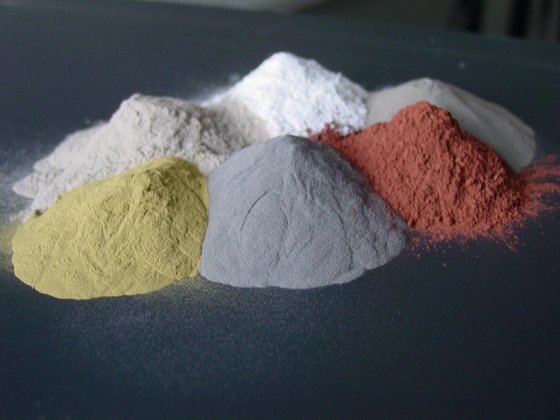 Accommodation and meals for service engineers are provided by the buyer of the equipment.
Accommodation and meals for service engineers are provided by the buyer of the equipment.
In addition to the above metal powder atomization equipment, Mosinduktor offers
to supply equipment for the production of:
- Titanium powder by gas atomization, with a capacity of 20-50 kg per day
- Ultrafine copper powder sprayed in water, with a capacity of 500-1000 tons per year
- Powder of gold, silver, platinum and other precious metals with a capacity of 20-50 kg per day
Since 2017, we are starting to supply industrial 3D printers from China for printing with metal, plastic, sand and photopolymer
Follow the news of additive 3D printing from the Mosinductor company on the website www.3d-mosprinter.ru
Video

